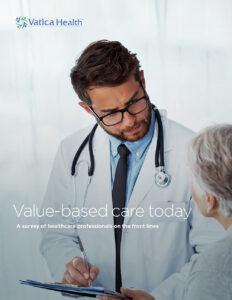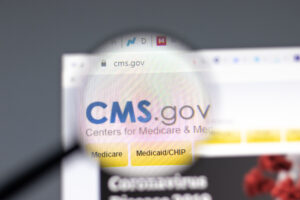Over the last few years, we’ve witnessed significant advancements in medical technology including the proliferation of telehealth, remote patient monitoring, and artificial intelligence. These offer the potential to dramatically improve insights and shape healthcare delivery. While technology development is essential, it must properly interface with clinical services to drive the maximum benefit—for providers and for patients.
Recent technology developments that provide coding and care gap notifications in electronic medical records (EMRs) offer increased potential for value-based care. These solutions address an important problem—but are incomplete as they don’t ensure conditions are coded correctly. Patients must have their conditions accurately coded to ensure health plans and providers receive appropriate compensation. Accurate coding can lead to cost-effective clinical services with the goal of improving patient outcomes.
In reality, these “technology-only” solutions may compound the problem. Providers are inundated with competing priorities and lack resources to add additional uncompensated services—a situation exacerbated by COVID-19. Current solutions cause alert fatigue and have little impact on care. They also suggest insights based on unsubstantiated data and therefore create compliance risk.
Value-based care requires a comprehensive solution
The transition to value-based care is inevitable. By 2025, it is anticipated that all Medicare Advantage and traditional Medicare plans will adopt two-sided risk alternative payment models. Fifty percent of Medicaid and commercial plans will adopt these models. This move requires providers to accurately code services for appropriate risk-adjusted reimbursement, connecting financial performance and quality of care. Success in value-based care depends on accurately assessing patient needs so that provider payments—based on the reported health conditions for that patient—will be sufficient to deliver appropriate care.
Technology cannot replace providers and clinical judgement. To drive optimal performance in value-based care, consider leveraging powerful, clinically validated technology coupled with clinical experts. By using technology combined with clinical experts, care gaps and relevant diagnostic codes can be identified. Such comprehensive services lead to more accurate coding and better performance in value-based care for both providers and health plans.
Evaluating possible solutions
There are a growing number of solutions that promise to drive value-based care performance, but very few that provide a comprehensive approach to improving risk adjustment coding and quality of care. Here are three questions to consider when evaluating various solutions:
- Is the risk adjustment and quality solution provider-centric? Providers need intuitive, easy-to-learn, and simple-to-use technology that seamlessly fits into their workflow, uses their EMR and intelligently mines data to optimize efficiency.
- Does the solution provide comprehensive in-office support? In addition to data and technology, providers need access to onsite clinicians who understand the technology and serve as an extension of their team at no cost to the practice. These clinicians can perform various tasks to reduce the burden on providers and their staff.
- Does the solution ensure coding accuracy and compliance? While there are “technology-only” solutions that surface codes in providers’ EMRs, they are often derived from unreliable data sources and not validated by certified clinical coders. This creates audit and compliance risk.
How Vatica Health can help
Vatica Health is a pioneer in provider-centric technology and support solutions that directly improve clinical outcomes, efficiency, and financial performance. Vatica Health deploys clinical nurses at the point of care, armed with powerful technology. Vatica Health is accelerating the transformation to value-based care by helping providers, health plans, and patients work together to achieve better outcomes. Visit https://vaticahealth.com/ to learn more.











